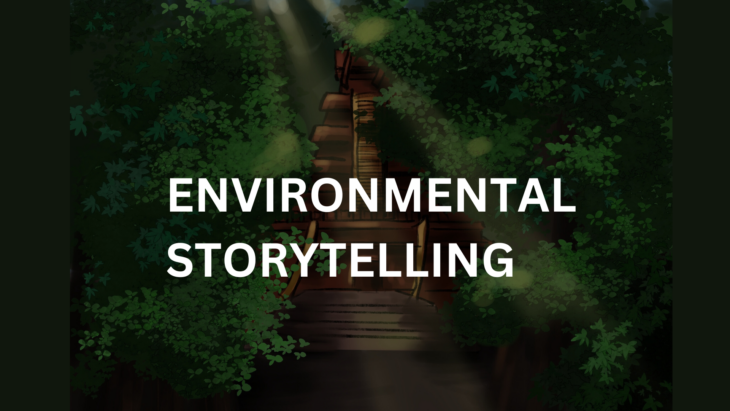
Environmental Storytelling: Let the Level Do the Talking
Volume 27, Issue 23
Image credit belongs to me (Malena Rose)
Okay, we’ve all been there. You’re playing a cool new game and BAM—you’re slapped with a massive text dump explaining the world’s entire history. I would be gone by then. If there is something I dislike most in games, then it is too much text.
Here’s the thing: your game levels can actually tell awesome stories without forcing players to read a novel. It’s called environmental storytelling, and it’s basically the game design equivalent of “show, don’t tell.”
Think about finding an abandoned apartment with kids’ drawings on the fridge, a family dinner still on the table, and a trail of blood leading to the bathroom. Without anyone saying a word, you instantly get what went down—and it’s way more chilling than some character monologuing about it.
Our hometown heroes at Remedy Entertainment (the Control folks) are absolute wizards at this. They turned boring office spaces into mind-blowing storytelling playgrounds. Filing cabinets floating in mid-air and coffee cups stuck to the ceiling tell you something seriously weird happened without lengthy explanations.
Want to try this in your own games? Keep it simple:
Toss in some visual hints that make sense together. If there was a zombie outbreak, maybe show some knocked-over barricades, spray-painted warnings, and a few sad goodbye notes. Each little detail adds up to the bigger picture.
Put the cool stuff where players will actually see it! Nobody’s looking up at the ceiling unless you give them a reason to (like, I dunno, floating furniture?).
Play with the unexpected. A single fresh flower in an otherwise dead garden. A modern phone in a medieval dungeon. When something feels out of place, players will naturally start wondering “what’s the story here?”
And don’t sleep on sound effects! Creaky floors, distant music, or weird noises from the vents can make empty rooms feel loaded with history.
- How To Get Started With Art - 25th April 2025
- What Makes The Finnish Game Industry So Special - 17th April 2025
- Why Retro Gaming Is Still Cool In 2025 - 11th April 2025
